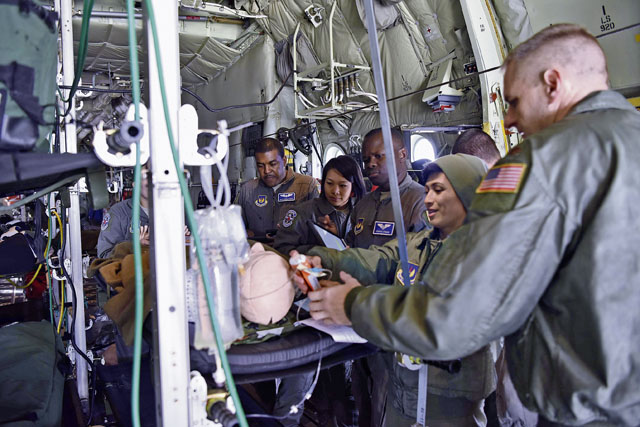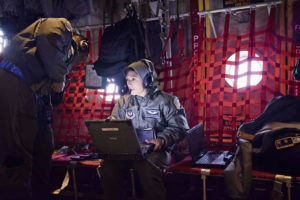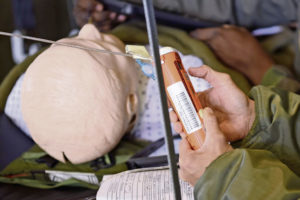

The 86th Aeromedical Evacuation Squadron conducted a training exercise on Chievres Air Base, Belgium Oct. 23.
The 86th AES conducts readiness missions regularly to test preparedness and keep their skills up.
“In addition to the training, we had evaluations for certain crew members during this exercise to test their skills and to identify areas that need improvement,” said Tech Sgt. Robert Van Aken, 86th AES clinical management.
86th AES provides operational aeromedical evacuation for American troops in the U.S. European Command and U.S. Africa Command.
“Our mission is to move any patient globally, anytime and anywhere,” said Maj. Maria Vazquez, 86th AES medical crew director. “Our patients rely on us, so training is essential because it makes us proficient at our job.”
During the training mission, the aeromedical evacuation technicians practiced emergency procedures for fires and depressurization.
“The purpose of training on an aircraft is to make sure everyone can fly safely, take care of patients, and are efficient in their clinical skills,” said Van Aken.

The 86th AES train in the air to prepare their bodies for the stresses of flight.
“We train on aircraft to get our bodies familiar with being in the air, to react better to the stresses of flight,” said Van Aken. “It can be taxing on the body, so as fliers, the more we’re able to fly the more our bodies will be accustomed to functioning in the air, which allows us, when the time comes, to focus on the patients instead of our fatigue.”
Two flight nurses and three aeromedical evacuation technicians are the standard crew for an 86th AES mission.
“My responsibility is to oversee everything is being done properly and safely,” said Vazquez. “If there’s any aircraft emergency or patient emergency, it’s my duty to communicate that to the pilot. My job is to make sure my patients and my crew are safe.”
Aeromedical Evacuation has gone beyond what it used to be able to do in Vietnam, said Vazquez. It took on average 45 days to move a patient, who would only have a 75 percent survivability rate. Now patients are moved within hours and have a 99 percent survivability rate.
“Our mission is to provide support and the full spectrum of aeromedical evacuation capabilities, to any global combatant commander,” said Vazquez. “We are an integral part in global mobility and global reach.”


